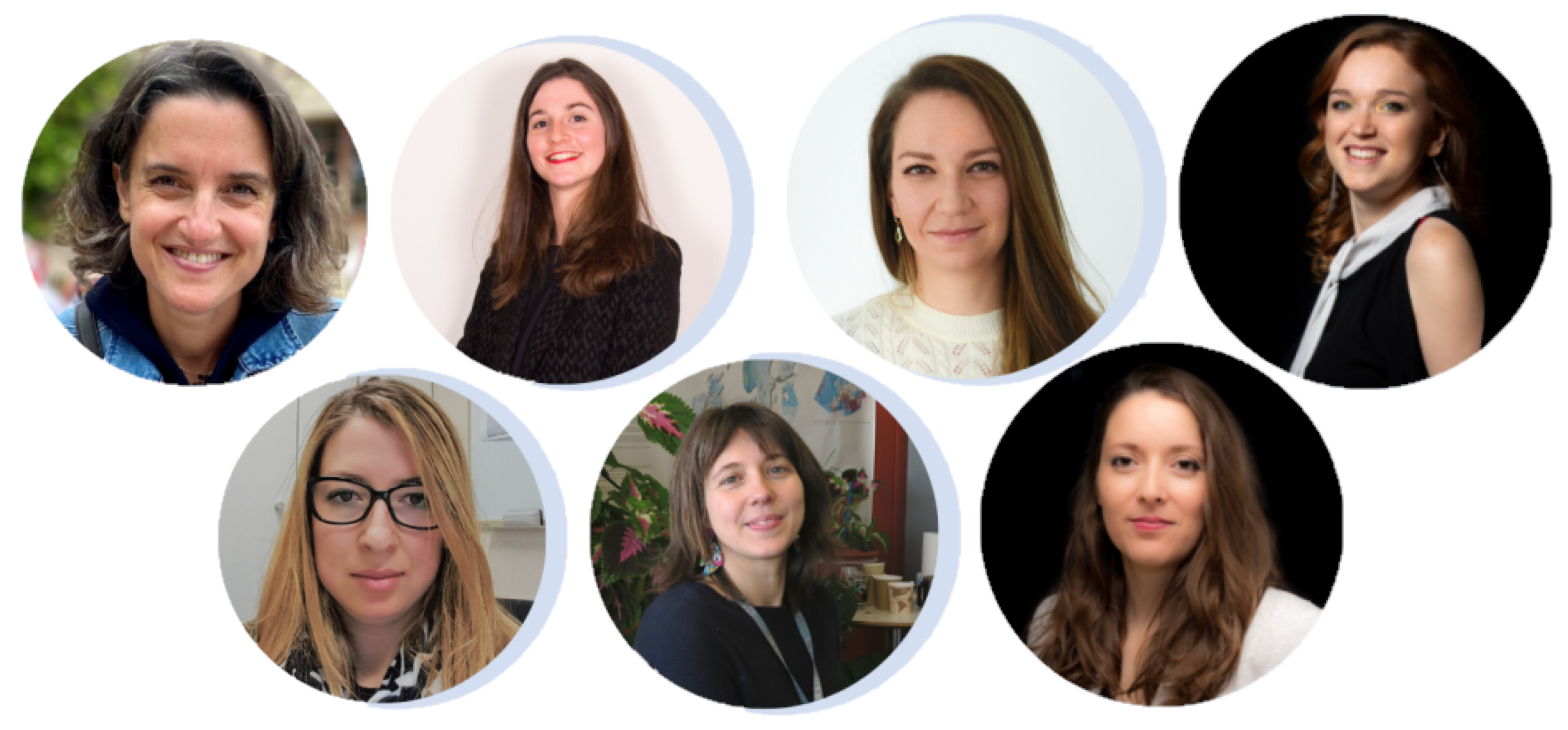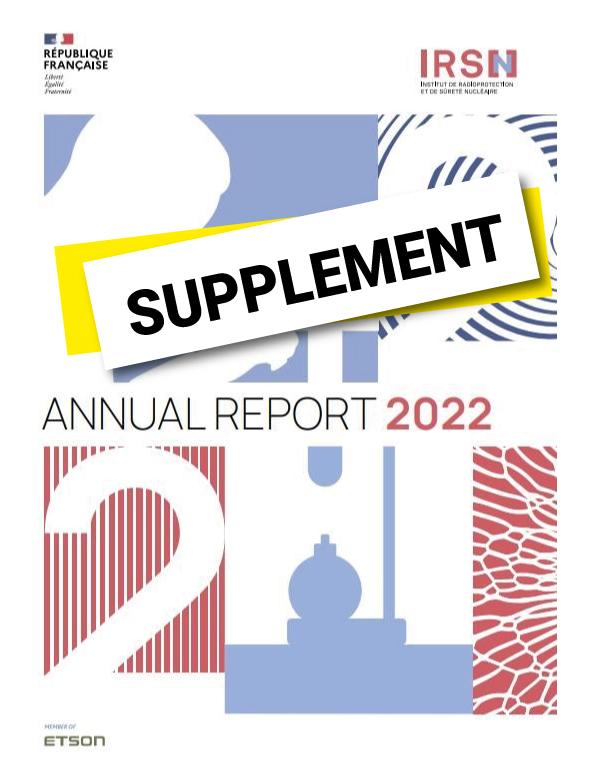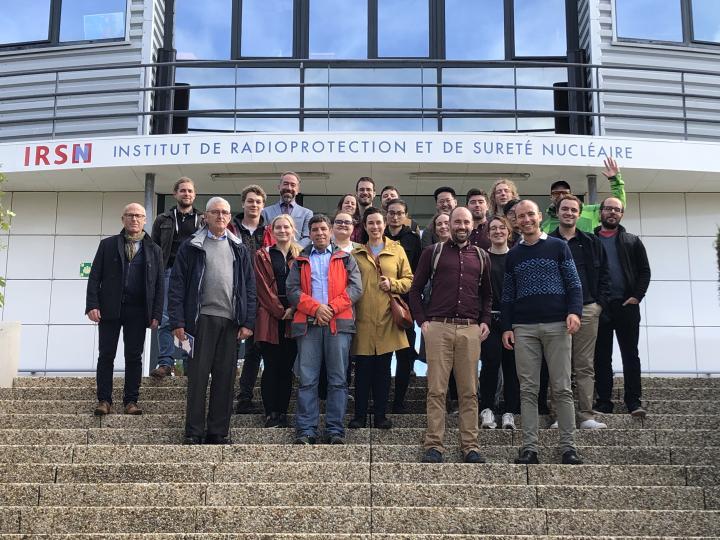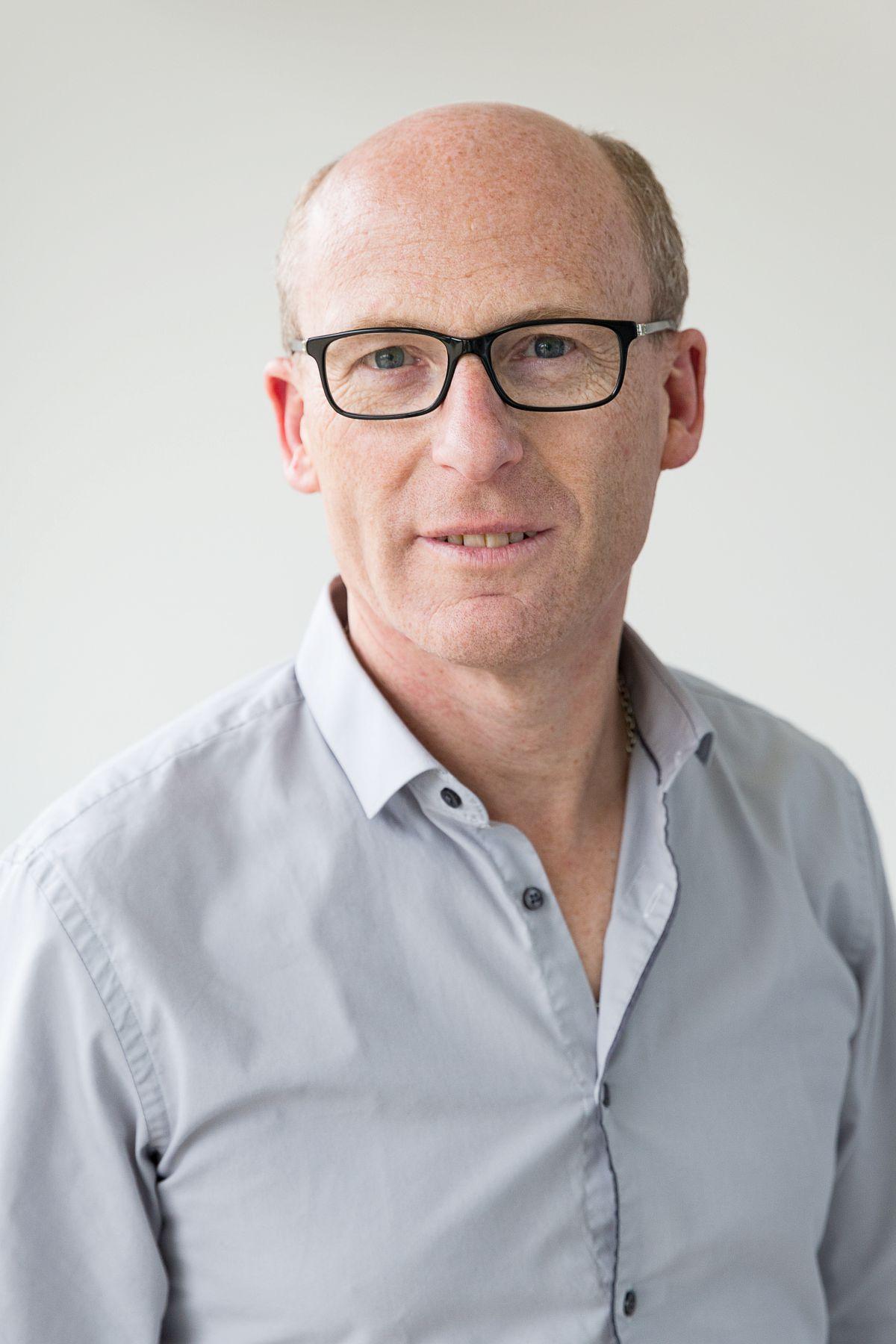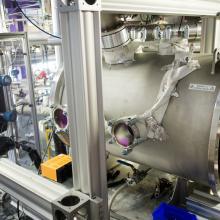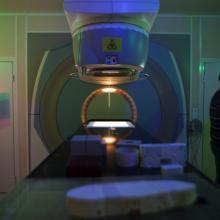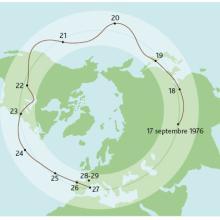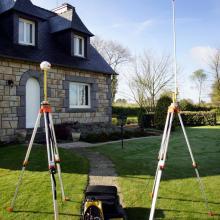2022 highlights
The annual report supplement
The year 2022 is a singular and particularly rich one : it marks the 20th anniversary of the Institute, with the publication in 2002 of the decrees creating the Institute and defining its missions.
In addition to the 2022 annual report, this page contains other research and communications highlights.
Sharing and disseminating knowledge
Welcoming young ETSON researchers and engineers
From October 24 to 28, at IRSN in Cherbourg, more than twenty members of the “Junior Staff Program” of the European ETSON network of technical nuclear safety organizations attended their annual "Summer Workshop".
The aim of this program is to encourage interaction between young people from the various organizations, to facilitate exchanges on their respective safety practices and approaches, and to help them expand their professional networks. The general theme of this 2022 edition was the spread of radioactive materials – at sea and in the atmosphere – and radioactive waste.
The 2022 program included contributions from participants, interactive case studies, and site visits: to the Flamanville EPR site, IRSN’s Cherbourg laboratory which works on the impact of radionuclides on the marine and terrestrial environment, and the marine biology exhibits at the Cherbourg Cité de la Mer museum.
In addition to IRSN, there were participants representing ENEA (Italy), LEI (Lithuania), GRS (Germany), SURO (Czech Republic), Jacobs RSD and National Nuclear Laboratories (UK), VTT (Finland), BelV (Belgium), as well as NRA (Japan), an associate member of ETSON. The SSTC (Ukraine), which was unable to organize the 2020 session due to the Covid-19 pandemic and then the conflict in its territory, will be given priority to host the next Summer Workshop as soon as the situation allows.
In their own words
"The exchanges with JSP participants were very rich and relevant, during both the laboratory visit and the case study that we proposed to them on the impact of a radionuclide discharge. The point of such meetings is to compare different perspectives, on the link between expertise and research, on the dissemination of knowledge or on our research themes, since the approach to nuclear safety and radiation protection is not the same in all European countries." Denis Maro, Head of the Cherbourg Radioecology Laboratory in Cotentin.
Safety research
IRSN commissions three research facilities
Inaugurated on 29 September 2022, these three facilities located in the center of Cadarache (Bouches-du-Rhône) will be used for nuclear reactor safety research projects :
- The first, called EVA, is designed to study the fatigue of steels in the primary circuit of a reactor
- the second, ASPIC, to assess the effectiveness of a spray system to cool a partially or totally dewatered fuel assembly
- the third, MIDI, to study the thermohydraulic phenomena at the scale of a spent fuel pool before the dewatering of fuel assemblies
These last two installations were developed as part of the DENOPI project on the accidental dewatering of spent fuel deactivation pools, a post-Fukushima project backed by the Government as part of the Nuclear Safety and Radiation Protection Research (RSNR) program.

Improving knowledge of fluid-structure interactions
Fluid-structure interactions are a concern for nuclear power plant safety. These interactions can, for example, lead to vibrations in the steam generator tubes caused by the secondary fluid and causing these tubes to break.
The objective of the European GO-VIKING (Gathering expertise On Vibration ImpaKt In Nuclear power Generation) project – launched in 2022 and in which IRSN is a partner – is to improve the tools and skills of European nuclear safety stakeholders in analyzing fluid-structure interactions.
As part of this project, IRSN will provide experimental data using the TREFLE facility. Packed with instrumentation, this device is used to study the two-phase flows in a subsection of the tube bundle of a steam generator as well as the vibration response of the central tube.
IRSN, author of an article commended by the AESJ
On March 18, 2022, the Atomic Energy Society of Japan (AESJ) awarded its best article prize to IRSN for its article "Fukushima-Daiichi fuel debris retrieval: results of aerosol characterization during laser cutting of non-radioactive corium simulants" published in the Journal of Nuclear Science and Technology. The Institute conducts, on behalf of Japan, R&D projects in this field within a French consortium, alongside the CEA and Onet Technologies.

ITER: when scientists get on their game
The operating principle of the ITER international experimental reactor is based on the fusion of hydrogen atoms (deuterium and tritium) in a vacuum chamber.
In the event of loss of containment, the tritium resulting from the fusion would be released. To limit such a discharge, the amount of tritium contained in the beryllium dust emanating from the erosion of the walls of the ITER chamber would need to be reduced. Six scientists from IRSN and the University of Patras (Greece) have been working together since 2017 to determine the accumulation capacities of tritium within beryllium nanoparticles.
The Institute provides its know-how in condensed material physics, and the University its expertise in beryllium nanoparticles. Completed in 2022, this work provides IRSN with key information to assess the consequences of an accident within the ITER reactor: it reveals that the beryllium nanoparticles capture a larger quantity of tritium than would be suggested by the low solubility of tritium in solid metal. This result needs to be taken into account when monitoring this radioactive dust, or indeed when developing techniques to recover it.
IRSN-CNRS teaching partnership
The 3rd School of Fire Sciences and Applications (ESIA), organized by the CNRS in spring 2022 and dedicated to fire research training, called upon various teachers-researchers from university laboratories as well as guest experts. As experts in their field, the IRSN Fire Experimentation Laboratory (LEF) was asked to run the fire metrology course.
Health research
First report of the Transparency Charter on the use of animals in research
The publication in June 2022 of the first annual report on transparency in animal research meets the fourth commitment of the Transparency Charter on the use of animals for scientific and regulatory purposes in France, signed by IRSN in 2021. As one of the 38 signatories committed to greater transparency in this area, the Institute has engaged to provide clear and comprehensive information on the reasons and conditions for the use of animal models, on the regulatory framework, and on the resulting scientific progress. This Charter is supported by Gircor, of which IRSN has been a member since 2007.
This first report was drawn up on the basis of a questionnaire completed by each signatory. For this exercise, IRSN carried out a self-assessment in relation to its transparency policy, enabling it to identify strong points and areas for improvement. IRSN’s responses are in line with those of other signatories.
COR sets up a working group on individual radiosensitivity
After studying the issue of nuclear safety skills and the impacts of climate change, IRSN’s Research Orientation Committee (COR) continued to implement the work program established in 2020, while setting up a task force on individual radiosensitivity.
Based on the latest scientific knowledge, the task force will explore the technical, societal, ethical, legal, and regulatory issues arising from the variability of the effects of exposure to ionizing radiation from one individual to the next. This variability — whose mechanisms are now starting to be better known — constitutes a decisive factor for amending medical practices and, potentially, for renewing the radiation protection system. At the end of its mission, the task force will produce recommendations and proposals on how to integrate these issues into IRSN’s research focus on environmental health and the fight against cancer.
In brief
-
The ANR has selected the RADIO-AIDE project, which mobilizes eight French partners under the coordination of IRSN. The aim of this project, launched in April 2022, is to develop probabilistic modeling and artificial intelligence tools to automate and improve MRI brain scan processing, characterize radiation-induced brain lesions according to their spatiotemporal progression dynamics, and individually predict the occurrence of cognitive disorders at an early stage after radiotherapy. By so doing, these disorders could be better managed during the clinical follow-up of patients.
-
In order to better understand the exposure of the population to ionizing radiation and its effects on human health, the CORALE research project was launched in the last quarter of 2022. It is based on a questionnaire sent to 80,000 volunteers from the Constances cohort of Inserm in order to determine their individual exposures – environmental, medical and occupational – to these different sources of radioactivity in order to study the relationships between exposures to low doses of radioactivity and their potential health effects, which often manifest themselves at a later date.
-
In collaboration with the Pitié-Salpêtrière hospital (Paris), IRSN continued the START study in 2022; a study focusing on salivary complications following treatment with radioiodine in people with differentiated thyroid cancer. The aim of this study is to evaluate the incidence, target the prognostic factors, and estimate the evolution and impact on the quality of life of these complications in patients. Enrolled patients were followed up for 18 months with three visits: at baseline, at six months, and at 18 months after radioiodine treatment. The follow-up was completed in October 2022.
-
Defended in July 2022, the thesis, hosted by IRSN, funded by Air France and co-supervised by the Institute and the University of Orléans, has added to the knowledge base concerning terrestrial gamma-ray flash (TGF) phenomena emitted during thunderstorms, and the risk of exposure for flight crews. An initial statistical study carried out by cross-checking Air France’s flight plans collected over two-and-a-half years and a TGF database gives a probability of impact once every 390 years for the entire Air France fleet. This work is continuing with a program of in-flight measurements.
Environmental research
IRSN continues with TRAJECTOIRE
The potential ecological impact of new materials used in the context of industrial transformations, such as today’s energy transition, must be studied in order to identify the causal links between their implementation and the effects observed in the environment. In this respect, studying their trajectories within river systems provides valuable insights into the fate of the contaminants they generate. Indeed, rivers – receptacles for many substances, most of which are stored in the river sediments – make it possible to constitute “sedimentary archives” which demonstrate, a posteriori, the nature and levels of contamination of these environments.
Launched in 2020 for a period of four years with the funding of the National Research Agency (ANR), the TRAJECTOIRE project mobilizes seven universities and research institutes under the leadership of IRSN. By reconstructing the pathways of three families of contaminants (diverse radionuclides, microplastics, and certain rare metals used in high-tech) detected at the outlets of the major French drainage basins, the project aims to reconstruct the history of this pollution from the beginning of the twentieth century to the present day, to establish the predictive trajectories of these contaminants, and to demonstrate the impact of political, economic and societal choices on the resilience of the environment.
2022 signals the completion of the stage of constituting the sedimentary archives covering the outlets of the seven major drainage basins of French rivers over the past 100 years, with more than 500 samples made available to the scientific community. This is an international first, paving the way for trajectory analysis of the contaminants studied. The project results are expected in 2024.
Continuation of two seismic risk research projects
The first, called DARE, is a Franco-German research project initiated and managed by IRSN to study the impact of local geology on seismic movement in the Tricastin area. The work carried out in 2022 enabled an initial mapping of the movement amplification due to the sedimentary valley of Tricastin, based on mixed approaches combining observations and computer simulations.
The second, called ACROSS, is a Franco-Italian project on the study of seismic movements induced by earthquakes in the past, based on analysis of structural problems and listed repairs for historic buildings. Progress in 2022 included collecting the ambient vibration data necessary for the characterization of the local geology as well as carrying out historical and petrographic studies to reconstruct the seismic history of the structures in question.
IRSN collaborates with CSTB as part of the European RadoNorm project
Launched in 2020 for a five-year period under the guidance of the German Federal Office for Radiation Protection (BfS), RadoNorm was created to improve the protection of the population against exposure to radon and materials containing naturally occurring radioactive materials (NORM). In 2022, IRSN, a contributor to this project which mobilizes 56 partners from 22 countries, continued to work in partnership with the CSTB (Scientific and Technical Center for Building) to model the transport of radon from ground to building and estimate the radon concentration of indoor air.
Communication
Networking
In 2022, IRSN joined Culture Science Sud Provence-Alpes-Côte d'Azur, a scientific culture network. This network incorporates museums, research laboratories, associations, and institutions, all signatories to the scientific culture network charter. What they have in common is to offer the public of the PACA region, and in particular young people, cultural initiatives designed to bring science to life, spark interest and foster enthusiasm. By becoming part of this concerted effort to support initiatives that spread the culture of science, technology and industry, the Institute aims to increase, at a regional level, the visibility and influence of its activities carried out at the Cadarache site (Bouches-du-Rhône).
Participatory science
The Cosmic on Air project was presented at C'SPACE, an event organized by CNES and Planète Sciences where young people and professionals gathered to indulge in a common passion: Space, from July 16 to 23 in Tarbes (Hautes-Pyrénées). At an OpenRadiation/Cosmic on Air stand at this event, participants got the chance to discover this participatory science project backed by the Institute. The aim of this project is to improve assessment, among other things, of exposure to cosmic radiation on board an aircraft. Visitors were able to make measurements using the sensors provided. Cosmic on Air draws on the experience and tools developed as part of the OpenRadiation collaborative project, which involves collecting measurements on the ground.
In addition to this, the annual OpenRadiation Community Day took place, online, on April 8, 2022 on the theme of “measurement without borders”, and featuring video interviews of OpenRadiation project leaders in Europe. Our website was also overhauled this past year, a project initiated through participatory workshops conducted with IRSN Lab.
The Institute's women scientists in the spotlight
From 18 to 20 February 2022, IRSN took part in the first "Women in Science" conference, held at the Centre des Congrès de la Villette in Paris, in partnership with the Association fédérative nationale des étudiants.e.s universitaires scientifiques (AFNEUS).
The aim of the event was to raise awareness of the place of girls and women in scientific courses and careers, to deconstruct prejudices and gender stereotypes, and also to highlight the diversity of scientific professions and careers in order to encourage vocations, particularly among young girls.
IRSN had a stand where female scientists (doctoral candidates, PhDs and engineers) took turns sharing their experiences and talking with members of the public who wanted to find out more about their careers and research topics. Human resources representatives were also on hand to provide information about the Institute, jobs and careers.
One of the Institute's qualified researchers took part in a round table discussion on "Prejudice: does it start at school?
The Institute's participation in this conference was part of a wider project to promote its female scientific staff through the publication of several portraits on its website.
